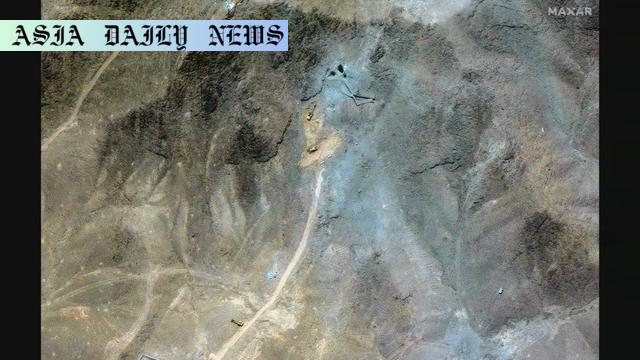Fordow nuclear site: Satellite imagery shows efforts to repair damage at the Fordow nuclear facility after a recent US airstrike.

Introduction to the Fordow Controversy
New satellite imagery released by US-based Maxar Technologies has brought attention to Iran’s Fordow nuclear site after a recent US airstrike targeted the area. As tensions escalate between the two nations, the latest visuals reveal significant damage inflicted on this sensitive facility, known for its strategic importance in Iran’s nuclear ambitions. This article aims to delve into the details of the event, assess the implications, and explore the broader context of Iran’s nuclear activities within global geopolitics.
Geopolitical Significance of the Fordow Site
The Fordow nuclear facility holds a critical position in Iran’s nuclear program. Situated in a fortified underground structure, this site has been a focal point of concern for the international community regarding possible uranium enrichment for military purposes. The recent airstrike can be interpreted as part of broader efforts to curb Iran’s advancements in nuclear technology. The presence of repair equipment and vehicles, as evidenced in the new imagery, underscores the urgency with which Iran is attempting to recover from this setback. This incident may further strain US-Iran relations, already fraught with disputes over sanctions, nuclear negotiations, and regional influence.
Insights from the Satellite Imagery
The satellite photos, captured by Maxar Technologies, provide a detailed view of the post-strike condition at Fordow. Visible craters suggest the impact of precision strikes, while excavators and bulldozers actively attend to the damaged areas. According to analysts, the repair of the main access road is a top priority, likely to ensure the continued functionality of this critical site. The presence of such activity underscores Iran’s resilience in maintaining its nuclear operations amidst external challenges.
Broader Implications of the Airstrike
This airstrike raises critical questions about the potential for escalation in the region. It also highlights the vulnerabilities of even highly-secured installations in the face of advanced military technology. The global community will closely monitor developments, as actions like these carry wider implications for Iran’s relationships with other nations, including those involved in the Joint Comprehensive Plan of Action (JCPOA). Renewed international efforts may arise to bring parties back to the negotiating table regarding Iran’s nuclear program.
Concluding Thoughts
The Fordow nuclear site remains a flashpoint in an already volatile region. This incident underscores the high stakes of geopolitical maneuvering around nuclear capabilities. While the immediate aftermath of the airstrike is visibly being managed, the long-term outcomes remain uncertain. Both Iran and its adversaries face critical choices in navigating this crisis, as the prospect of escalation looms large. Observers must closely examine how these developments influence the delicate balance of power in the Middle East.
Commentary
The Strategic Importance of the Fordow Incident
As one of the most fortified installations within Iran’s nuclear program, the Fordow site has long been a topic of international scrutiny. Its geographical positioning deep underground signifies its importance in Iran’s strategic defense plans. The recent US airstrike on this critical facility is a bold move, reflecting heightened tensions between the two nations. Satellite imagery revealing repair efforts offers a glimpse into Iran’s determination to maintain its program amidst increasing foreign intervention. This development serves as a reminder of the fragile dynamics governing nuclear diplomacy.
Implications for Regional Stability
Iran occupies a central role in the geopolitical landscape of the Middle East. The recent attack on Fordow could exacerbate existing tensions in the region, as neighboring nations and international actors reassess their positions. While the airstrike demonstrates military power, it also raises questions about its potential backlash. Acts of aggression, even those targeting specific facilities, run the risk of escalating into broader conflicts. This incident prompts governments and organizations to carefully evaluate strategies aimed at deterrence versus dialogue.
The Global Community’s Role
The Fordow airstrike also places responsibility on the global community to address nuclear proliferation with urgency. While the US justifies such actions as preventive measures, they can also undermine diplomatic solutions such as the JCPOA. Global powers must work collaboratively to rebuild trust and explore actionable agreements that balance security concerns with the need for peaceful resolutions. Ultimately, achieving stability requires not only military interventions but also sustained diplomatic engagement and mutual concessions.
Final Reflection
The current focus on Fordow exemplifies both the challenges and necessities of addressing nuclear proliferation. It is crucial that nations prioritize de-escalation over confrontation to avoid spiraling into extended conflict. While satellite imagery provides crucial insights into on-ground realities, it is diplomatic engagement that will ultimately determine the path forward. The international community has a pivotal role to play in steering these developments towards a more stable future for all involved.


